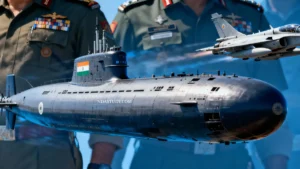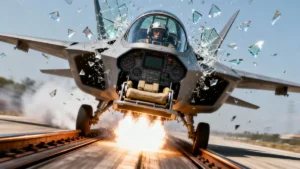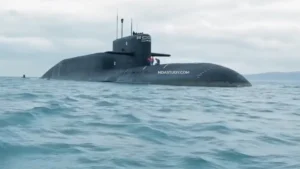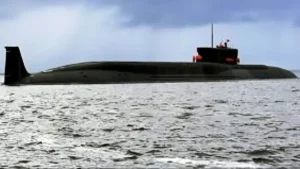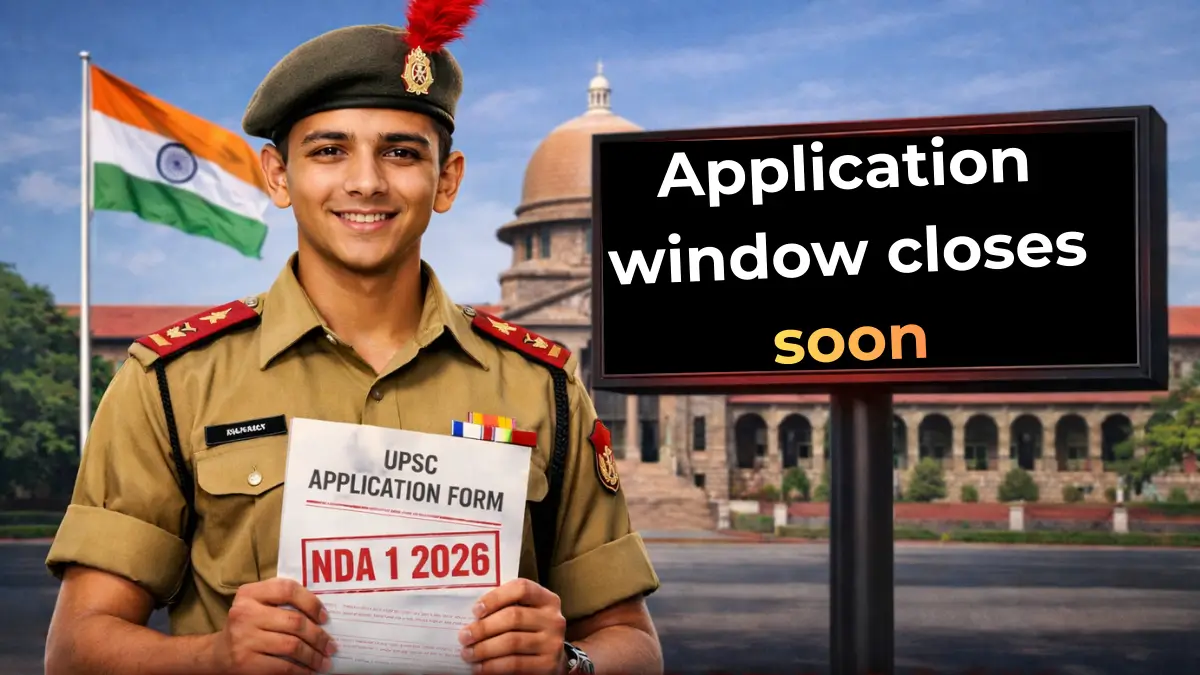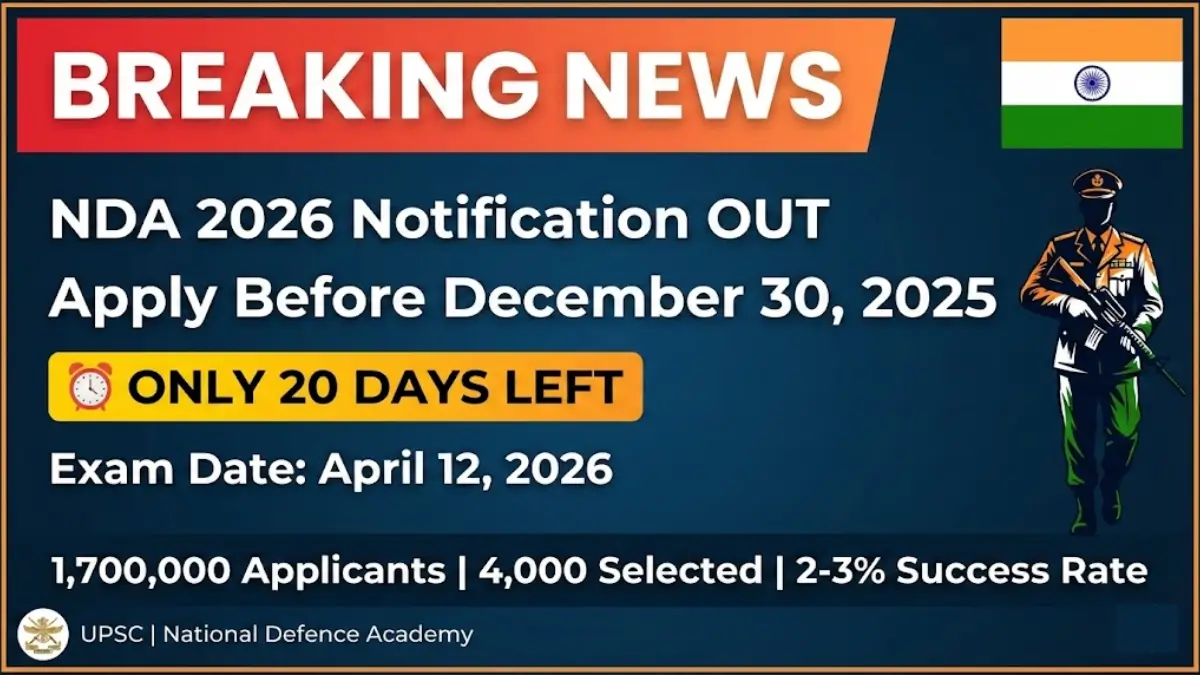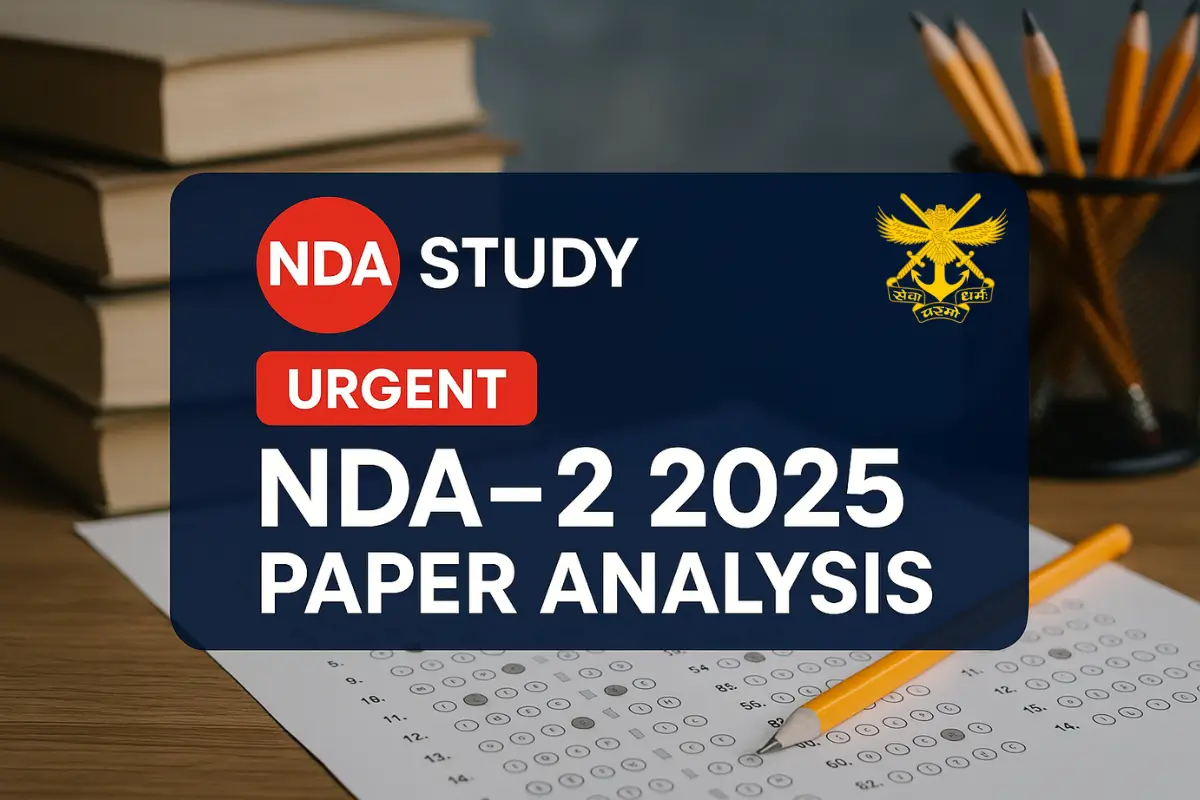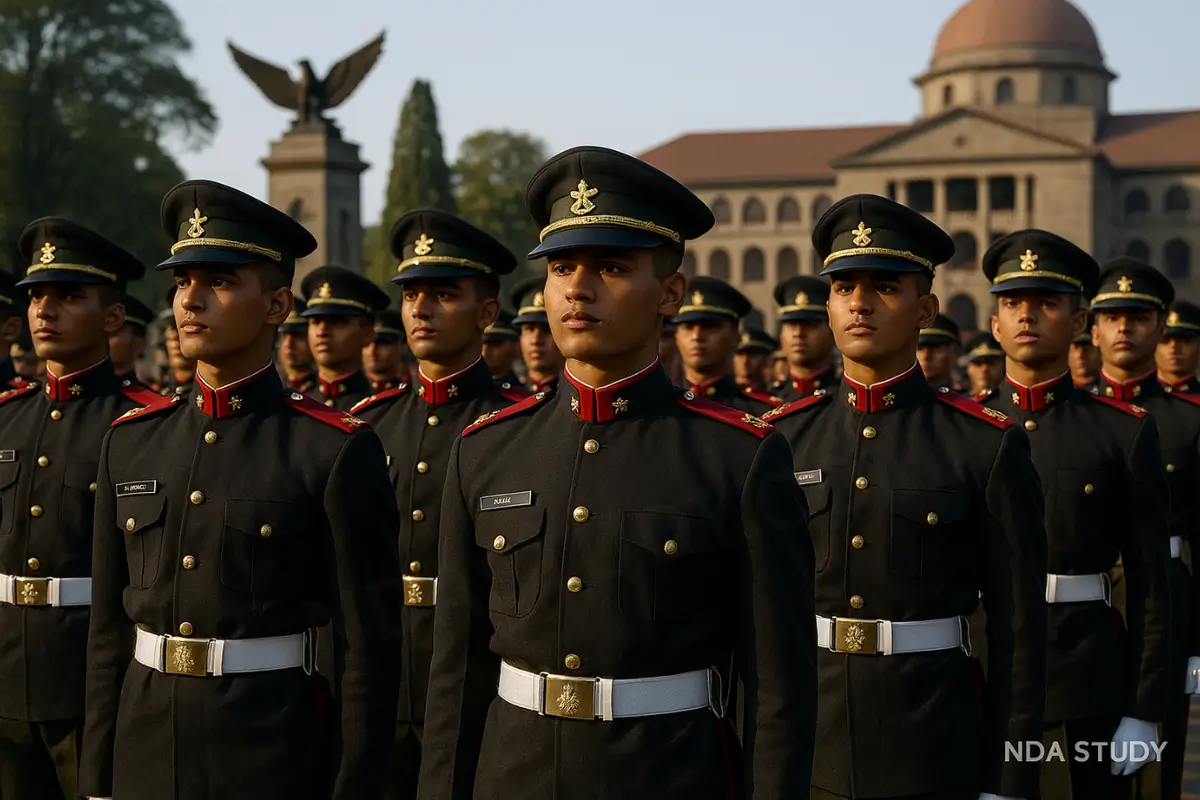India and Vietnam have just marked a historic strategic defence breakthrough with the 15th Defence Policy Dialogue in Hanoi (November 10, 2025), immediately launching VINBAX 2025—the bilateral UN peacekeeping exercise that began November 11 with nearly 300+ military personnel engaged in 18-day intensive field operations. What distinguishes this as pivotal: India stands as Vietnam’s only international partner conducting annual, field-based UN peacekeeping drills—a singular arrangement within Southeast Asia reflecting unparalleled strategic trust. Defence Secretary Rajesh Kumar Singh, presiding over the opening ceremony alongside Vietnam’s Deputy Minister of National Defence, declared the exercise “an important component of bilateral defence cooperation,” advancing both nations’ shared commitment to UN peacekeeping excellence.
Simultaneously, two transformative agreements reshaped the partnership: a Memorandum of Agreement on Submarine Search and Rescue Support—enabling coordinated Indo-Pacific maritime operations—and a Letter of Intent on Defence Industry Collaboration, positioning India’s “Make in India” defence manufacturing expertise alongside Vietnam’s Hong Ha Shipyard capabilities. With India contributing over 300,000 peacekeepers across 51 UN missions globally and Vietnam expanding its peacekeeping portfolio, this partnership exemplifies how mid-sized powers strengthen collective regional stability amid Indo-Pacific geopolitical tensions.
The 15th DPD: India-Vietnam Defence Cooperation 2025
The 15th India-Vietnam Defence Policy Dialogue, co-chaired by India’s Defence Secretary Rajesh Kumar Singh and Vietnam’s Deputy Minister of National Defence, Senior Lieutenant General Hoang Xuan Chien, represented far more than a routine policy review. This dialogue—the highest-level platform for steering the bilateral India-Vietnam defence cooperation framework—resulted in two transformative agreements that will reshape the contours of their maritime partnership for years to come.
Two Milestone Agreements Signed: A Memorandum of Agreement on Mutual Submarine Search, Rescue Support and Cooperation, and a Letter of Intent on Defence Industry Collaboration—each strategic in its own right, collectively forming the backbone of what Defence Secretary Singh termed a “vibrant symbol of the strong development in defence cooperation and strategic trust.”
The Submarine Search and Rescue MoA
The Memorandum of Agreement on Submarine Search and Rescue Support represents a quantum leap in the India-Vietnam strategic partnership. This framework—unprecedented in its scope within the region—establishes coordinated mechanisms for submarine emergency assistance, encompassing the deployment of specialised personnel, advanced equipment, and technical expertise. The MoA directly enhances naval interoperability between the Indian Navy and the Vietnam People’s Navy, strengthening their collective ability to respond to submarine-related crises in the Indo-Pacific region.
What makes this agreement particularly significant is its operational nature. Unlike theoretical MOUs, this agreement mandates shared protocols, joint training frameworks, and real-time coordination procedures. It reflects both nations’ commitment to maritime safety and their determination to maintain a free, open, and rules-based Indo-Pacific order amid growing geopolitical tensions.
Significance for the Region: This submarine cooperation framework sends a clear signal: India and Vietnam are not merely defence partners; they are interoperable operational allies prepared for real-world maritime contingencies. For India, this solidifies its role as a credible, capable defender of regional stability. For Vietnam, it provides access to India’s substantial submarine rescue expertise—a critical asset given Vietnam’s expanding maritime domain awareness operations and the strategic importance of the South China Sea.
Making “Make in India” a Reality in Southeast Asia
The Letter of Intent on Defence Industry Collaboration represents India’s ambition to become a defence manufacturing hub for Southeast Asia, with Vietnam as a strategic production and innovation partner. This LoI encompasses six interconnected pillars: technology transfer, high-tech domain prioritisation, joint research and ventures, defence production material procurement, equipment exchange, and design collaboration.
The implications are transformative. Rather than Vietnam importing fully-manufactured defence systems, the LoI establishes a framework for co-production, knowledge-sharing, and indigenous capability building. Joint research initiatives in areas like advanced shipbuilding, naval architecture, and defence electronics position both nations to reduce dependence on external suppliers while building world-class manufacturing ecosystems.
Make in India in Southeast Asia: Defence Secretary Singh’s visit to Hong Ha Shipyard—Vietnam’s key defence industrial facility—underscores India’s serious commitment. The discussions at Hong Ha focused on potential manufacturing partnerships, shipbuilding modernisation, and technology roadmaps. This is not theoretical cooperation; India is actively positioning itself to support Vietnam’s defence industrial modernisation through direct, hands-on partnerships aligned with India’s Atmanirbhar Bharat (Self-Reliant India) vision.
Future Cooperation Timeline: Both countries agreed to convene the next Defence Industry Cooperation meeting in December 2025, demonstrating the momentum behind these initiatives. The 16th Defence Policy Dialogue will be held in India in 2026, further deepening the institutional framework.
VINBAX 2025: India’s Exclusive UN Peacekeeping Partnership with Vietnam
Let’s take a deep dive into VINBAX 2025 and what this Exclusive UN peacekeeping partnership with Vietnam entails.
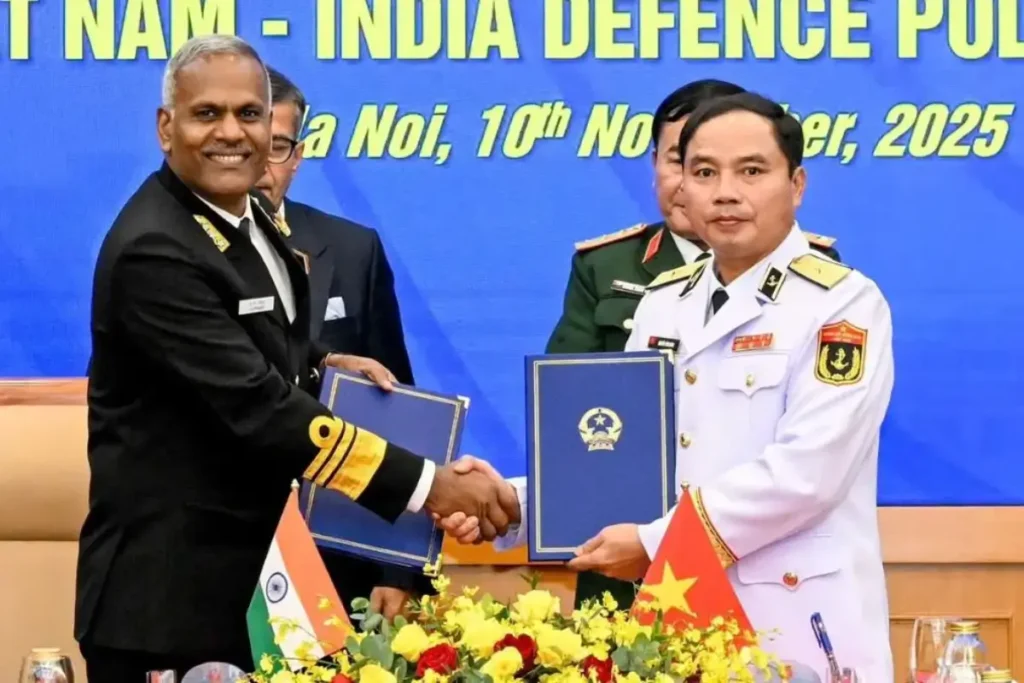
What is VINBAX 2025? Decoding the Exercise
VINBAX 2025 stands for Vietnam-India Bilateral Exercise 2025. It is the 6th edition overall and the 4th field-based iteration of this landmark bilateral military exercise. First launched in 2018 at Jabalpur, Madhya Pradesh, VINBAX has evolved from theoretical tabletop drills into comprehensive, in-depth professional field operations focused entirely on UN peacekeeping operations preparedness.
The exercise operates on an annual rotation: held alternately in India and Vietnam, it provides both militaries with recurring, high-intensity training opportunities. VINBAX 2024 was held in India; VINBAX 2025 takes place in Vietnam—reinforcing the pattern of institutional commitment and sustained capability-building.
The 18-Day Training Programme
Duration: November 11–27, 2025 (18 days)
Location: National Military Training Centre 4, Mieu Mon, Hanoi
Personnel: Nearly 300 military personnel from India and Vietnam
Exercise Director: Major General Pham Manh Thang, Director of Vietnam Department of Peacekeeping Operations
VINBAX 2025 Composition:
The exercise brings together specialised units: engineer contingents (combat engineers, reconnaissance teams), military medical units (field doctors, paramedics, medical support staff), military observers, search and rescue specialists, and peacekeeping operations coordinators. This diverse composition mirrors real UN peacekeeping deployments, where multiple specialised capabilities must operate seamlessly under unified command structures.
Three-Phase Training Framework:
Phase 1: Classroom & Protocol Training (November 11–15)
Participants engage in intensive sessions on UN peacekeeping operations standards, including the UN Charter, peacekeeping mandate protocols, rules of engagement (ROE), and ethical frameworks governing UN missions. Special emphasis is placed on the contributions of both India and Vietnam to global peacekeeping—India ranks among the world’s largest UN peacekeeping troop contributors, while Vietnam has been progressively expanding its UN engagement.
Phase 2: Technical Skills Development (November 16–24)
Hands-on training in engineering operations (bridge construction, mine clearance, infrastructure repair under operational constraints), field medical response (trauma management, epidemic response, emergency evacuation), and advanced search and rescue techniques (underwater operations, personnel extraction, equipment deployment). These skills are directly transferable to UN-mandated humanitarian aid and disaster relief operations.
Phase 3: Large-Scale Integrated Field Drills (November 25–27)
Realistic, simulated UN mission scenarios combining all trained skills. Participants operate under strict safety protocols with realistic mission conditions—time constraints, resource limitations, inter-unit coordination challenges—mirroring actual peacekeeping deployment complexities.
Why India is Vietnam’s ONLY International UN Peacekeeping Partner
This is the headline that every geopolitical analyst should internalise: India is Vietnam’s only international partner conducting field-based UN peacekeeping exercises annually. No other nation—not China, not Russia, not Japan, not any ASEAN member—conducts such comprehensive, recurring, in-the-field UN peacekeeping drills with Vietnam.
What This Signals: This exclusivity reflects multiple layers of strategic significance. First, it demonstrates exceptional trust: Vietnam chose to establish this partnership specifically with India, signalling confidence in Indian military professionalism, doctrine compatibility, and shared commitment to UN peacekeeping principles. Second, it reveals institutional depth: VINBAX has evolved from tabletop exercises (theoretical) to field exercises (operational), demonstrating a maturation trajectory that only deep partnerships achieve. Third, it positions India as Vietnam’s preferred defence and strategic partner in the peacekeeping domain—a positioning that extends far beyond bilateral relations into India’s broader Indo-Pacific strategy and Act East Policy.
Evolution from Tabletop to Field Operations: In 2018–2019, VINBAX consisted of tabletop discussions and theoretical scenario planning. By 2025, VINBAX will have transformed into comprehensive field exercises with 300+ personnel, advanced equipment, and realistic mission simulations. This evolution—from theory to practice—is precisely the trajectory that indicates a partnership’s maturity and operational credibility.
Regional Implications: In a region where every military partnership is scrutinised through the lens of geopolitical alignment, India-Vietnam’s exclusive UN peacekeeping arrangement stands as a powerful symbol of their bilateral trust and shared vision for regional stability. For India, it consolidates its positioning as Southeast Asia’s most reliable defence partner. For Vietnam, it provides access to the world’s leading peacekeeping military with deployment experience across multiple continents.
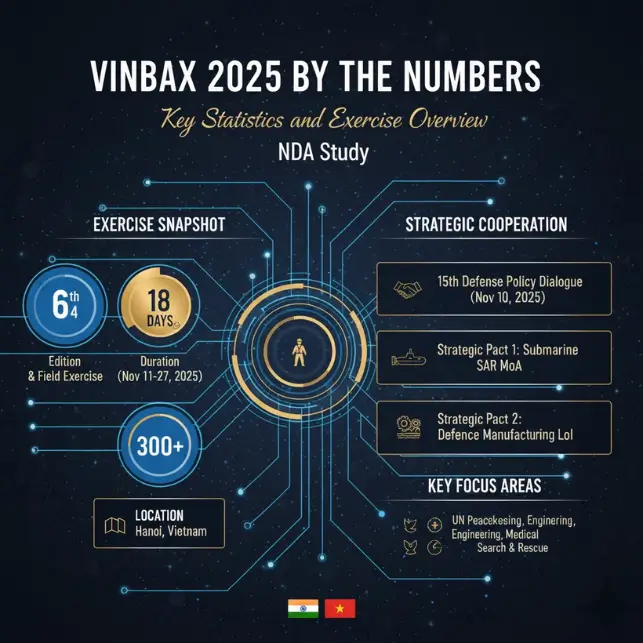
Defence Industry Collaboration
Here, we cover the importance of collaboration in the defence industry, recent advancements in shipbuilding and manufacturing, their impact, and future opportunities.
India’s Defence Manufacturing Gateway to Southeast Asia
Defence Secretary Rajesh Kumar Singh’s visit to Hong Ha Shipyard wasn’t ceremonial. It was a working visit to assess Vietnam’s premier defence industrial facility and explore tangible production partnerships. Hong Ha Shipyard—Vietnam’s key defence manufacturing hub—became the focal point for discussing India-Vietnam’s joint production roadmap.
The discussions centred on three core areas: advanced shipbuilding collaboration, defence equipment manufacturing, and technology transfer frameworks. Rather than India supplying finished systems to Vietnam, the LoI envisions Vietnam and India jointly designing and producing defence systems, with India providing advanced technology, design expertise, and manufacturing know-how derived from India’s growing defence industrial ecosystem.
Make in India – Make for Southeast Asia
India’s Atmanirbhar Bharat (Self-Reliant India) defence manufacturing initiative has produced indigenous systems rivalling global standards: submarines, fighter jets, missiles, radar systems, and naval platforms. By partnering with Vietnam at Hong Ha, India is exporting not just products but entire manufacturing capabilities and technology roadmaps.
Specific Collaboration Opportunities:
- Submarine rescue systems: Building on the submarine MoA, India could co-develop advanced rescue equipment with Vietnam.
- Naval platform upgradation: Modernising Vietnam’s naval assets using Indian design and manufacturing standards.
- Electronics and combat systems: Co-producing defence electronics, fire control systems, and navigation equipment.
- Training and human capital: Building Vietnamese expertise in advanced defence manufacturing, creating long-term capability.
Economic Multiplier Effect: Defence manufacturing partnerships create skilled jobs, develop supply chains, attract private sector investment, and position Vietnam as a regional defence production hub—amplifying the economic benefits beyond bilateral relations.
Why This Partnership Matters in the Indo-Pacific
Regional Security Landscape & India’s Act East Policy
The 15th Defence Policy Dialogue and VINBAX 2025 launch occur against a backdrop of intensifying Indo-Pacific geopolitical competition. The South China Sea remains contested territory; regional powers are hedging their strategic bets; and nations like Vietnam—geographically proximate to China yet determined to maintain autonomy—are diversifying their defence partnerships to ensure national security.
India’s Act East Policy, articulated as India’s strategic orientation toward Southeast Asia and the broader Indo-Pacific, finds its most tangible expression in the India-Vietnam Comprehensive Strategic Partnership. This partnership, established in 2016, has evolved from diplomatic rhetoric into operational reality: joint naval exercises, coordinated air operations, information-sharing frameworks, and now, as of November 2025, integrated UN peacekeeping operations.
Vietnam’s Balancing Act: Vietnam pursues a “strategic hedging” approach—maintaining relations with multiple powers while protecting its sovereignty and independence. India fits perfectly into this strategy: it is a distant power with no territorial claims on Vietnam, a proven defence partner, a fellow democracy with shared values around rules-based order, and a nation equally committed to maritime stability in the Indo-Pacific.
India’s Unique Position in Southeast Asia
Among all of India’s defence partnerships in ASEAN, the India-Vietnam ties stand as the deepest and most operationally mature. Consider the comparison:
| Partnership | VINBAX Parallel | Defence Industry Collaboration | UN Peacekeeping Drills |
|---|---|---|---|
| India-Vietnam | ✅ Exclusive, annual, field-based | ✅ Yes (Hong Ha Shipyard focus) | ✅ Only international partner |
| India-Indonesia | Training exchanges | Limited framework | Informal participation |
| India-Philippines | Joint exercises | Emerging | Ad-hoc coordination |
| India-Thailand | Naval cooperation | Defense talks | Participatory |
This comparison crystallises India’s distinct strategic value to Vietnam: no other partner offers the combination of exclusive peacekeeping drills, institutional depth, defence manufacturing partnership, and unambiguous commitment to rules-based regional order that characterises the India-Vietnam relationship.
The Future of India-Vietnam Defence Ties
During the 15th Defence Policy Dialogue, both sides explicitly agreed to explore and deepen cooperation in several emerging domains:
Cybersecurity & Defence IT
As both nations modernise their military command-and-control systems, cybersecurity cooperation becomes critical. India and Vietnam agreed to establish joint frameworks for protecting defence networks, sharing threat intelligence, and developing indigenous cybersecurity solutions. This is particularly vital given the increasing digitisation of modern warfare and the strategic imperative of protecting classified defence communications.
Military Medicine & Medical Innovation
Field medical operations in UN peacekeeping often determine mission success. Both countries are committed to expanding military medicine exchange programs, including joint training on tropical disease management, trauma surgery in austere environments, and epidemic response protocols. India’s military medical institutions—among Asia’s most advanced—will share expertise with Vietnamese counterparts, creating a multiplier effect for regional medical readiness.
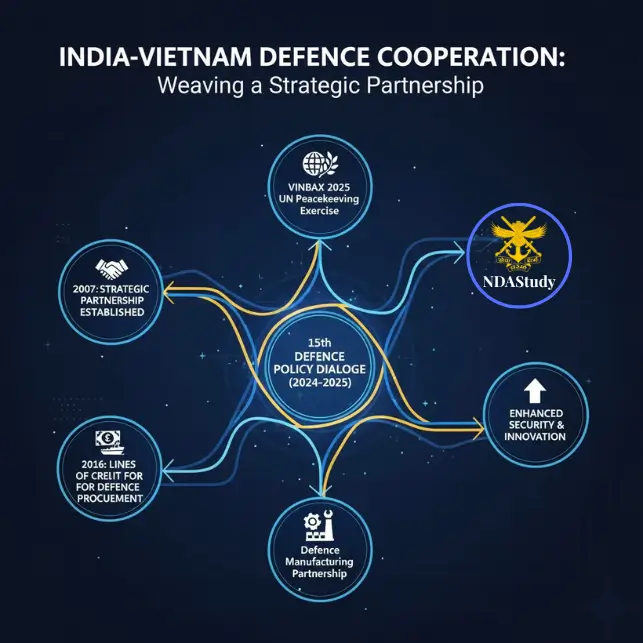
Advanced Search & Rescue Operations
Beyond the submarine rescue MoA, both nations identified advanced search and rescue (SAR) as a growth area. This includes underwater SAR, disaster response SAR, and cross-border coordination mechanisms. Joint training in these domains enhances both militaries’ capacities while creating interoperability frameworks applicable to genuine humanitarian emergencies.
Hydrographic Cooperation & Maritime Domain Awareness
Charting and maintaining nautical data is critical for naval operations and merchant shipping safety. India and Vietnam agreed to deepen hydrographic cooperation, including joint surveys, data-sharing on maritime domain awareness, and coordinated mapping of shared sea lanes. This technical cooperation has profound strategic implications for maritime security in the Indo-Pacific.
Artificial Intelligence & Defence Innovation
Both nations recognised AI’s transformative role in modern defence. The dialogue emphasised exploring AI applications in defence systems—autonomous systems, predictive analytics for intelligence, and AI-assisted command-and-control. By collaborating on defence AI, India and Vietnam position themselves at the frontier of military innovation rather than remaining dependent on external technologies.
What’s Next in India-Vietnam Defence Cooperation
Immediate Milestones (Next 6 Months)
December 2025: The next Defence Industry Cooperation meeting is scheduled, signalling momentum behind Hong Ha Shipyard collaborations and Make in India defence manufacturing partnerships.
Early 2026: Expected finalisation of detailed protocols for submarine rescue operations and joint training schedules. Defence Secretary Singh’s visit to India will solidify institutional frameworks.
Medium-Term Outlook (2026 Forward)
16th Defence Policy Dialogue (2026, India): The dialogue rotates to India, likely to be hosted in New Delhi or a strategically significant location. This will provide an opportunity to review VINBAX 2025 outcomes, finalise defence industry projects, and announce new cooperation areas.
Also Read:
VINBAX 2026: The next edition will be held in India, continuing the annual rotation. With momentum building, VINBAX 2026 is expected to expand in scale and introduce new training modules reflecting cybersecurity, AI, and military medicine priorities.
Vietnam International Defence Expo 2026 (Late 2026): Vietnam invited India’s Ministry of Defence and Indian defence enterprises to participate in the 3rd Vietnam International Defence Expo. This provides a platform for India to showcase its defence manufacturing capabilities and attract Vietnamese industry partnerships.
Long-Term Vision (2027+)
India and Vietnam are positioning themselves for a multi-decade partnership in defence, with cascading institutional mechanisms: regular policy dialogues, recurring exercises, joint manufacturing ventures, and coordinated participation in regional security frameworks (ADMM+, QUAD adjacency). The Comprehensive Strategic Partnership Joint Vision Statement 2030 provides the overarching framework, with defence as a core pillar.
FAQs|India-Vietnam Defence Cooperation
1. What is VINBAX 2025, and why is it significant?
VINBAX 2025 is the 6th edition of the Vietnam-India Bilateral Army Exercise, launched on November 11, 2025, in Hanoi. It’s the 4th field-based UN peacekeeping training, bringing ~300 personnel for 18-day intensive drills. Significance: India is Vietnam’s only international partner conducting annual field-level UN peacekeeping exercises—a testament to exceptional strategic trust and defence partnership depth. The exercise strengthens interoperability, medical expertise, and search-and-rescue capabilities for UN deployment readiness.
2. How is VINBAX 2025 different from previous editions?
VINBAX 2025 differs fundamentally in execution scale and sophistication. Earlier editions (2018–2019) were tabletop/theoretical exercises. VINBAX 2025 is the 4th field-based iteration—meaning live, integrated training under realistic mission conditions. Participants include ~300 personnel (vs. smaller theoretical groups), advanced technical simulation equipment, and three distinct phases: classroom protocols, technical skills training, and integrated large-scale field drills. This marks the most comprehensive bilateral UN peacekeeping preparation between the two militaries to date.
3. Why is India Vietnam’s only international UN peacekeeping partner?
India holds this unique position due to comprehensive strategic trust, military professionalism, shared Indo-Pacific vision, and proven defence cooperation depth. Since 2016 (Comprehensive Strategic Partnership establishment), India-Vietnam defence ties have evolved from advisory to operational collaboration. India’s substantial UN peacekeeping experience (the largest contributor globally) and commitment to ASEAN stability make it the preferred partner for Vietnam’s peacekeeping capability-building. No other nation conducts recurring, field-based UN peacekeeping exercises with Vietnam annually—reflecting exclusivity and partnership depth.
4. What are the key agreements signed during the 15th Defence Policy Dialogue?
Two major agreements:
Memorandum of Agreement on Submarine Search & Rescue Support—establishes coordinated maritime emergency response, personnel deployment, equipment sharing, and naval interoperability frameworks between Indian and Vietnamese navies.
Letter of Intent on Defence Industry Collaboration—promotes technology transfer, high-tech manufacturing domains, joint research ventures, defence procurement cooperation, and expert exchange—aligning with India’s Make in India initiative.
5. What is the timeline for VINBAX 2025, and what are the three phases?
November 11–27, 2025: Exercise duration (18 days)
Phase 1 (Nov 11–15): Classroom training on UN protocols and peacekeeping fundamentals
Phase 2 (Nov 16–24): Technical skills training in engineering, medical response, and search-and-rescue
Phase 3 (Nov 25–27): Integrated field exercises simulating real UN mission conditions
6. How does this partnership strengthen India’s Indo-Pacific strategy?
The partnership reinforces India’s “Act East Policy” and commitment to regional stability. Vietnam’s support for India’s ASEAN engagement, combined with submarine cooperation and defence manufacturing ties, positions India as a trusted, long-term strategic partner—not a transactional one—in the Indo-Pacific, crucial amid geopolitical tensions. India-Vietnam ties demonstrate India’s capacity to build deep, institutional defence partnerships across Southeast Asia.
7. What emerging areas will India-Vietnam explore together?
Both sides agreed to explore cybersecurity, military medicine, advanced search-and-rescue operations, AI applications in defence systems, and hydrographic cooperation. These newer cooperation frontiers reflect evolving security challenges and modernisation trajectories of both militaries, positioning them at the frontier of defence innovation rather than remaining dependent on external technologies.
What This Means for Aspirants, Analysts & Defence Enthusiasts
The VINBAX 2025 exercise and India-Vietnam partnership exemplify modern military professionalism, interoperability, and peacekeeping preparedness. Understanding these frameworks—VINBAX structure, UN peacekeeping operations, bilateral dialogue mechanisms—is directly relevant to defence services entrance exams. The exercise demonstrates career pathways: officers selected for UN peacekeeping deployments receive intensive preparation through VINBAX-like frameworks.
This partnership signals India’s emerging role as Southeast Asia’s preferred defence partner and demonstrates institutional maturity in bilateral defence cooperation. Analysts tracking India’s Indo-Pacific strategy, ASEAN engagement, and competition with China will find the India-Vietnam model—exclusive drills, joint manufacturing, maritime interoperability—as the gold standard for regional partnerships.
The Letter of Intent on Defence Industry Collaboration opens commercial opportunities. Indian defence manufacturers—from established PSUs like HAL and BEL to emerging private players—should actively explore Vietnamese partnerships, particularly in shipbuilding, electronics, and advanced systems. Vietnam’s defence modernisation trajectory creates a decade-long pipeline of manufacturing opportunities.
India-Vietnam defence ties exemplify how smaller nations (by military spending) can build strategic depth through institutional partnerships, technical cooperation, and shared strategic vision. The exclusivity of the UN peacekeeping partnership—India as Vietnam’s only international field-exercise partner—is a rare diplomatic achievement worth studying as a model of strategic alignment.

